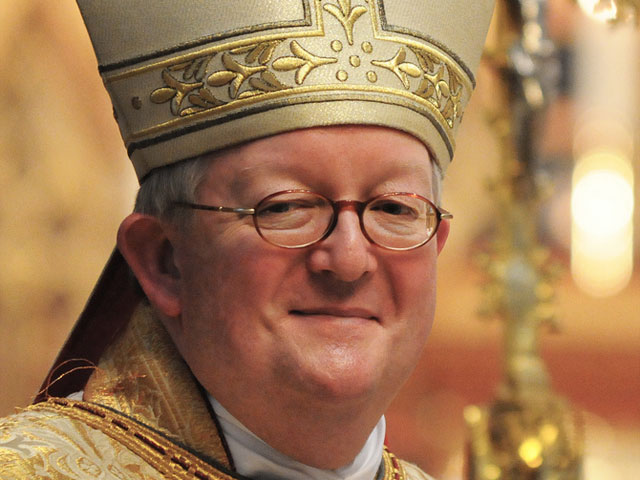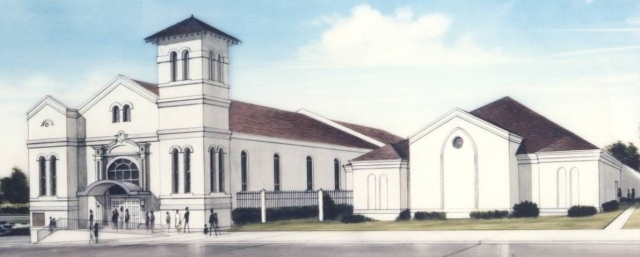Hell hath no fury like a reporter scorned, is my version of the traditional proverb.
Last night the Los Angeles Times had me going. A report on the lawsuits surrounding the First African Methodist Episcopal Church in Los Angeles — a major player in the city’s African-American community — in a story entitled “Judge dismisses defamation lawsuit filed by ex-First AME pastor” had me working the phones, calling lawyers and sources in California to track down news that was new to me. And for a reporter whose beat includes church law to be caught flat footed was quite a comeuppance.
Had I missed a major story? Here’s the lede:
A Los Angeles County judge dismissed a defamation lawsuit by the former pastor of First African Methodist Episcopal Church, who alleged he suffered emotional distress when he was removed from the helm of Los Angeles’ oldest black church.
Last December the paper reported the church filed suit against its former pastor the Rev. John Hunter, his wife and a group of other church officials and directors of affiliated corporations. It said:
Hunter has had a rocky tenure at the church. Since taking over First AME in 2004, Hunter has been sued for sexual harassment, a civil claim that was settled for an undisclosed amount. The Times reported in 2008 that an internal audit found he charged $122,000 in jewelry, family vacations and clothing to the church’s credit card. He later agreed to a nine-year repayment plan.
He earned a generous salary during his tenure, lived in a $2-million home and drove a Mercedes-Benz paid for by the church. His wife earned $147,000 a year running nonprofit organizations connected to the 19,000-member congregation. But over the last few years, the hilltop church in the West Adams district has fallen into debt. The church owes nearly $500,000 to creditors and some vendors say they have not been paid in more than a year.
The latest LA Times story reports on Hunter’s counter-suit, where he alleged First AME had:
“embarked upon a campaign to discredit and defame” him “by asserting maliciously false and inflammatory statements as well as taking steps to publicly humiliate him.”
This story is light on context. First AME has over 19,000 members and plays an active role in the community with numerous charitable and educational programs for at risk youth and the disadvantaged. Perhaps readers would have known this, but the importance of the church in the community was not spelled.
While the apparent disinterest by the LA Times was a point of concern, what set off my new news alarm was this statement in paragraph five.
On Wednesday, Los Angeles County Superior Court Judge Holly Kendig granted the church’s motion to dismiss the case brought by Hunter on grounds that a recent Supreme Court case limited the state’s action when dealing with religious affairs.
What court decision? Which Supreme Court? California or the U.S.? Covering the Episcopal Church has led me to write dozens upon dozens of stories on the litigation between it and conservative breakaway groups. Most of the cases have involved congregations seeking to withdraw from what they describe as “liberal” dioceses — including three cases in Los Angeles and Orange County, Cal., as well as dioceses seeking to leave the national Episcopal Church — including the Diocese of San Joaquin (covering California’s inland empire).
If the California Supreme Court had handed down a ruling that limited power of the courts to adjudicate church disputes this was major news. And quite an embarrassment for me. It is part of my job to follow these issues and not be surprised. Hence the flurry of emails and telephone calls to California from me asking to be let in on the secret.
One of my canon lawyer contacts responded:
I’m not sure what the case is to which the court had reference. If it’s the California Supreme Court, there are no “recent rulings” from it (of which I am aware) that could affect such a suit. Most likely the case meant is the U.S. Supreme Court’s decision in the Hosannah-Tabor case — which does not affect any of the Episcopal withdrawal cases (though [the Episcopal Church’s lawyers] would like it to).
In Hosanna-Tabor Evangelical Lutheran Church and School v. Equal Employment Opportunity Commission, 565 U.S. ___ (2012), the U.S. Supreme Court unanimously ruled that federal discrimination laws do not apply to religious organizations’ selection of religious leaders. Writing for the court, Chief Justice John Roberts held:
the Establishment Clause prevents the Government from appointing ministers, and the Free Exercise Clause prevents it from interfering with the freedom of religious groups to select their own.
Nothing to do with church property disputes then. My professional crisis was averted and my ego assuaged. Perhaps I read too much into the Times‘ account, but its explanation of the court’s decision was inadequate. Hell hath no fury like a reporter scorned when he sees a major story slip away.
The pedant in me must point out that this phrase too is not quite right. The line is from William Congreve’s tragedy The Mourning Bride (1697), III, 8: “Heaven has no rage like love to hatred turned, / Nor Hell a fury like a woman scorned.”
But given the ink expended on the Episcopal Church cases by the LA Times over the past decade, it seems somewhat miserly to cover a story about a major African-American church (whose membership is comparable in size to the Episcopal Diocese of Los Angeles) with such a paltry article.
Tell me Get Religion readers are the historically African-American churches under covered in the press? Are the mainline churches over exposed? Should the LA Times have put a bit more effort and information into its report?
Photo courtesy of Shutterstock.











